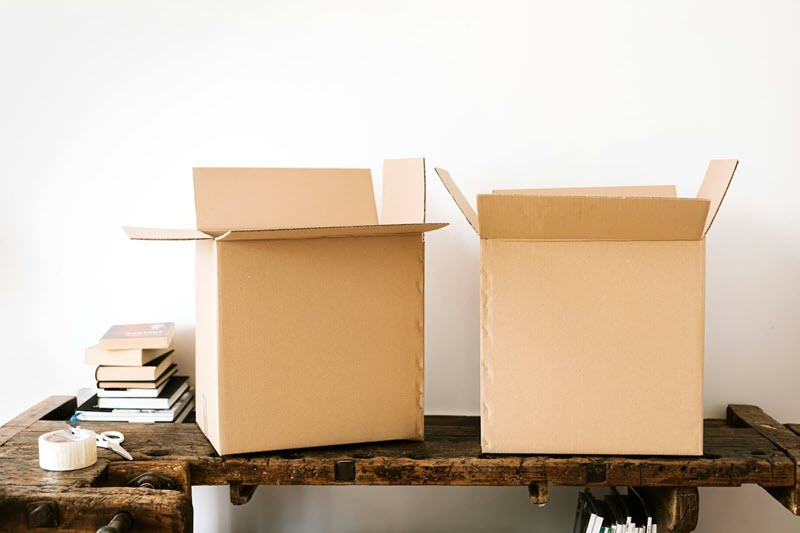
Storage units are a fantastic tool for seniors and caregivers alike. They offer a place to store important items without having them clutter up the home.
Such units are especially useful when a senior has recently downsized or when they’ve sold their home and moved in with you. With a storage unit, you can simply store any personal effects that won’t fit in the new living environment.
Storage units are also helpful if you don’t have the time or energy to sort through household effects. For example, if a senior recently moved to assisted living or memory care, they may not be willing or able to make decisions about their belongings. You could simply put the items into storage and make the big decisions later on.
Of course, storage units are most helpful when you can actually find the items stored in them. For that, some organization and space-saving strategies are needed. Space-saving also helps you minimize the size of your storage unit, which then saves you money. That’s a pretty important outcome, right?
How to Use Your Storage Unit Well
Identify Your Space Requirements
If you don’t have a storage unit yet, it’s time to think about the amount of space you’re likely to need. Here are a few areas to consider.
How Much Stuff They Have
The amount of space used previously is a good starting point. For example, if your aging parent has lived with you for years and space is only just becoming an issue, you may only need a small amount of storage. But, if they’re downsizing from a family home to living with you, you’re likely to need a larger unit to fit everything.
How many rooms do the items take up currently? What about when you get them all into boxes?
Also, will you be storing bulky items like furniture? Doing so will increase your storage needs considerably.
How Much Time You Have
It’s also worth thinking about how much organizing you’re able and willing to do. Do you have enough time to sort through everything and then store only the most crucial things? That can be a time-consuming process.
Organizing everything will obviously save you space. Still… time is a rare commodity for caregivers, so organizing might not be realistic. And honestly, organizing items for storage takes a surprising amount of time.
Part of the process is deciding what’s valuable enough to keep and what can be thrown out. Those decisions are emotional as well as practical, adding to the time.
Choose The Right Type of Storage
Next is the type of storage unit you choose. Climate-controlled units, for instance, are crucial for storing sensitive medical supplies that may be affected by extreme temperatures or humidity. A facility like Moove In storage, known for its variety of unit sizes and climate control options, can be an excellent choice.
If you’re mostly storing household items, then climate control won’t be all that relevant. You’ll be able to stick with a regular storage unit instead.
Think about the location of the storage unit as well. You’ll probably want one that’s accessible, so you can get items out of storage when you need them.
Seriously – there’s a good chance that you’ve packed away at least one item you’re going to need. That’s happened every single time I’ve put things into storage and I bet I’m not the only one.
Organize The Storage Unit
Even if you don’t plan to access the storage unit regularly, some type of organization is essential. At the very least, you should label the various boxes, so that you know what is located where.
Here are some other important approaches to consider.
Organize by Function
To start, try storing items based on their functions, like grouping all mobility aids together and separating them from medical supplies, daily care items, and household storage.
This categorization not only saves time but also reduces stress during critical moments.
Think About Where Items Are Stored
Many items in storage can simply be kept in large labeled boxes, as you won’t need to go into them much, if at all.
Things are different for things you want to access regularly. Here, clear sturdy containers are great for small items. The containers prevent damage while allowing you to see the contents at a glance.
For larger items, you might choose to use shelving units. These maximize vertical space while ensuring that everything remains accessible. Shelving helps to keep the floor clear too, which makes it easier to move around in the storage unit.
Label Everything Well
Labeling each container and shelf clearly is crucial for quick identification. This saves you time when you need to go in and locate something in a hurry.
Ensure Everything is Safe and Accessible
Caregivers need to ensure that all stored items are not only secure but also easily accessible.
Here are key considerations for achieving this:
- Place heavy items on lower shelves to prevent lifting injuries.
- Keep a clear pathway in the unit for easy access to all items.
- Use ergonomic storage solutions, like slide-out shelves, for ease of use.
The Occupational Safety and Health Administration (OSHA) provides guidelines on ergonomic practices, including guidelines for safe lifting, which can be highly beneficial in setting up a caregiver-friendly storage space. These measures not only protect the caregiver from potential injuries but also ensure that items can be retrieved quickly and efficiently in time-sensitive situations.
How to Store Medical Equipment Effectively
Storage units are most often used to keep items you won’t be accessing very often, particularly if you’re downsizing or combining households.
But, sometimes you’ll be storing items that you want to access regularly.
For example, you might live in a different state from your aging mother and keep a storage unit near her so that you can access personal items and medical supplies when you come to visit.
If you do have medical supplies in the unit, there are some extra things to consider.
It’s essential to ensure that these items are kept in conditions that preserve their functionality and cleanliness.
When selecting a storage unit for medical equipment, consider the following:
- Ensure the unit is climate-controlled to protect sensitive equipment.
- Store equipment off the ground on shelves or pallets to prevent moisture damage.
- Use clear, labeled bins for smaller items for easy identification.
- Keep frequently used items near the front of the unit for quick access.
- Regularly check and maintain equipment to ensure it’s in working order.
Balancing Home and Storage Space
For family caregivers, striking a balance between home and storage space is crucial. Doing so involves ensuring that the living environment remains comfortable and uncluttered, while essential caregiving items are stored safely and remain accessible.
So, which items will you keep at home for immediate use and which will you store?
Anything used daily or weekly should probably be kept at home. Otherwise, you’ll be visiting the storage unit far too often. In contrast, bulk supplies, seasonal items, and seldom-used equipment are better suited for storage.
This balance helps to maintain a peaceful and functional living environment, which is crucial for the well-being of both the caregiver and the care recipient. Doing so also helps streamline caregiving tasks and creates a more harmonious home, where the focus remains on quality care and a nurturing atmosphere.
Final Thoughts
Storage units are an interesting tool for caregiving. While they may not be your first choice, they can be a powerful way to clear up space in the home, without losing access to the items you need the most.
These units are most useful when they’re kept organized. This ensures you can easily find the items you’re looking for, even when you’re stressed and in a hurry.
Feeling Overwhelmed?
Check out our Caregiving Consulting service for personalized support and guidance.

Leave a Reply